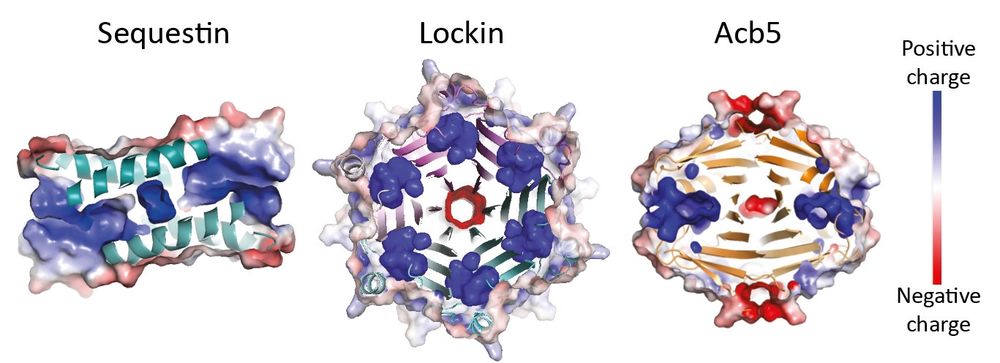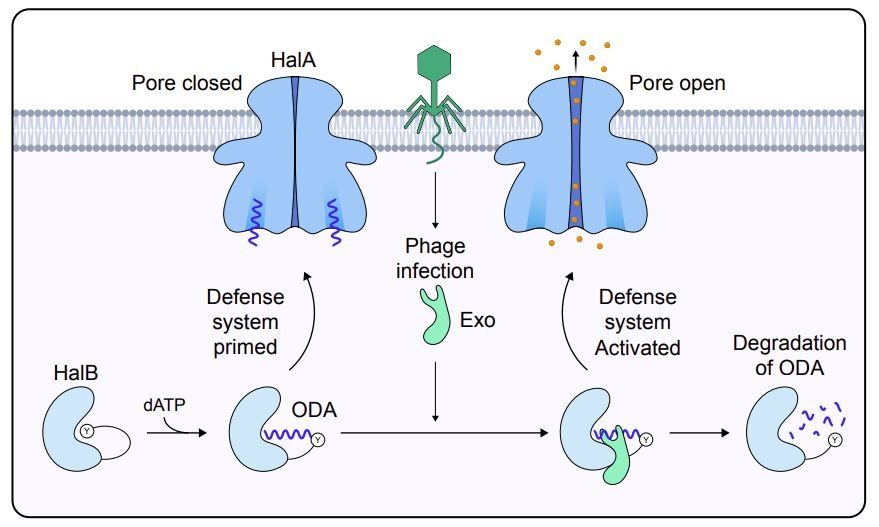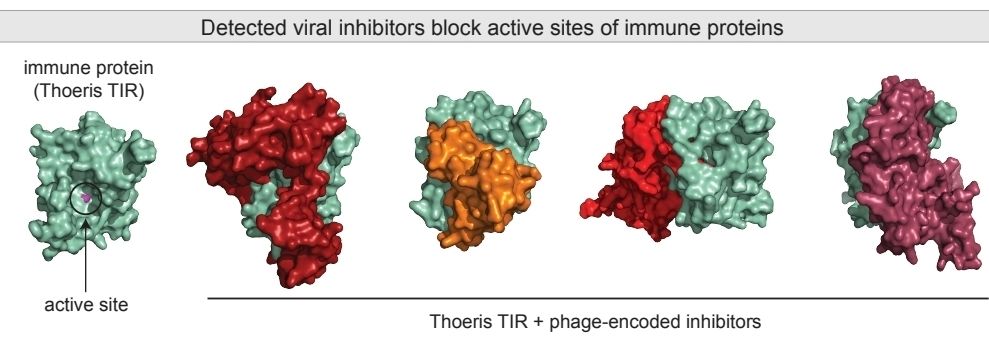Read her Prize Assay, published in the journal Science today
www.science.org/doi/10.1126/...
@nitzantal.bsky.social

Read her Prize Assay, published in the journal Science today
www.science.org/doi/10.1126/...
@nitzantal.bsky.social
tinyurl.com/ch3damp
We show how molecular byproducts released during virus-induced cell exploitation are used as signals to trigger host immunity
Revealed by the amazing Ilya Osterman. See his thread below👇

tinyurl.com/ch3damp
We show how molecular byproducts released during virus-induced cell exploitation are used as signals to trigger host immunity
Revealed by the amazing Ilya Osterman. See his thread below👇
7/n

7/n
5/n

5/n
4/n

4/n
3/n

3/n
The first viral sponges to inhibit Pycsar and type IV Thoeris
Congrats to talented leading author Romi Hadary! Read her thread to learn more about our findings


The first viral sponges to inhibit Pycsar and type IV Thoeris
Congrats to talented leading author Romi Hadary! Read her thread to learn more about our findings
14/16

14/16
13/16

13/16
12/16

12/16
11/16

11/16
10/16

10/16
9/16

9/16
8/16

8/16
5/

5/
4/

4/
3/

3/
Using AI-guided structural modeling, we find new families of viral proteins that sequester or cleave host immune signaling molecules
Congrats Nitzan Tal!
www.biorxiv.org/content/10.1...

Using AI-guided structural modeling, we find new families of viral proteins that sequester or cleave host immune signaling molecules
Congrats Nitzan Tal!
www.biorxiv.org/content/10.1...
A DNA-gated molecular guard controls bacterial Hailong anti-phage defence
Congrats Joel and Philip! Was a pleasure to contribute to this discovery together with Sarah Melamed
www.nature.com/articles/s41...

A DNA-gated molecular guard controls bacterial Hailong anti-phage defence
Congrats Joel and Philip! Was a pleasure to contribute to this discovery together with Sarah Melamed
www.nature.com/articles/s41...
Joint work with the Tamulaitienė and Kranzusch labs
www.nature.com/articles/s41...
Congrats Carmel Avraham, Dziugas Sabonis, Renee Chang and co-authors!

Joint work with the Tamulaitienė and Kranzusch labs
www.nature.com/articles/s41...
Congrats Carmel Avraham, Dziugas Sabonis, Renee Chang and co-authors!
We report a new immune signaling molecule: N7-cADPR. Produced by phage-induced TIRs and activates a defensive bacterial caspase
Congrats Francois Rousset, Ilya Osterman and coauthors!
www.science.org/doi/10.1126/...


We report a new immune signaling molecule: N7-cADPR. Produced by phage-induced TIRs and activates a defensive bacterial caspase
Congrats Francois Rousset, Ilya Osterman and coauthors!
www.science.org/doi/10.1126/...
CARDs are essential for caspase recruitment during human inflammasome activation. We now find them in bacterial immune systems
Congrats Tana Wein! Thank you Kranzusch lab!
www.nature.com/articles/s41...

CARDs are essential for caspase recruitment during human inflammasome activation. We now find them in bacterial immune systems
Congrats Tana Wein! Thank you Kranzusch lab!
www.nature.com/articles/s41...
Acb3 also inhibits the activity of human cGAS, binding residues conserved between the human and bacterial homologs
8/10


Acb3 also inhibits the activity of human cGAS, binding residues conserved between the human and bacterial homologs
8/10
Conservation of TIRs across bacteria, plants and humans leads to conservation of anti-TIR as well
7/10

Conservation of TIRs across bacteria, plants and humans leads to conservation of anti-TIR as well
7/10
6/10

6/10

